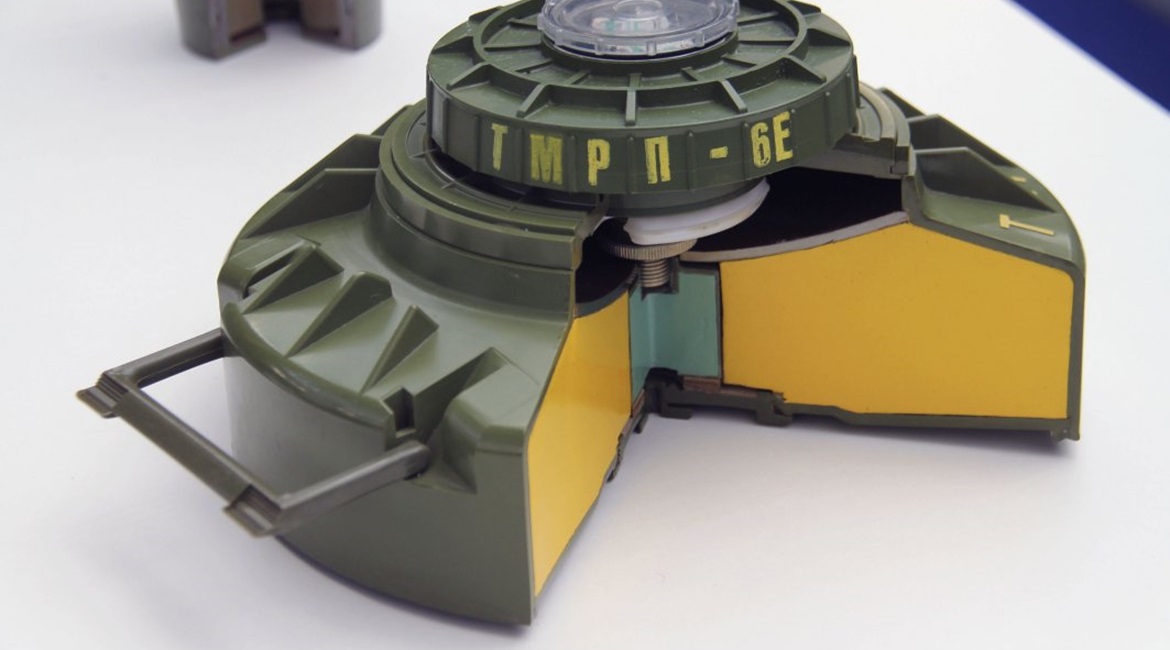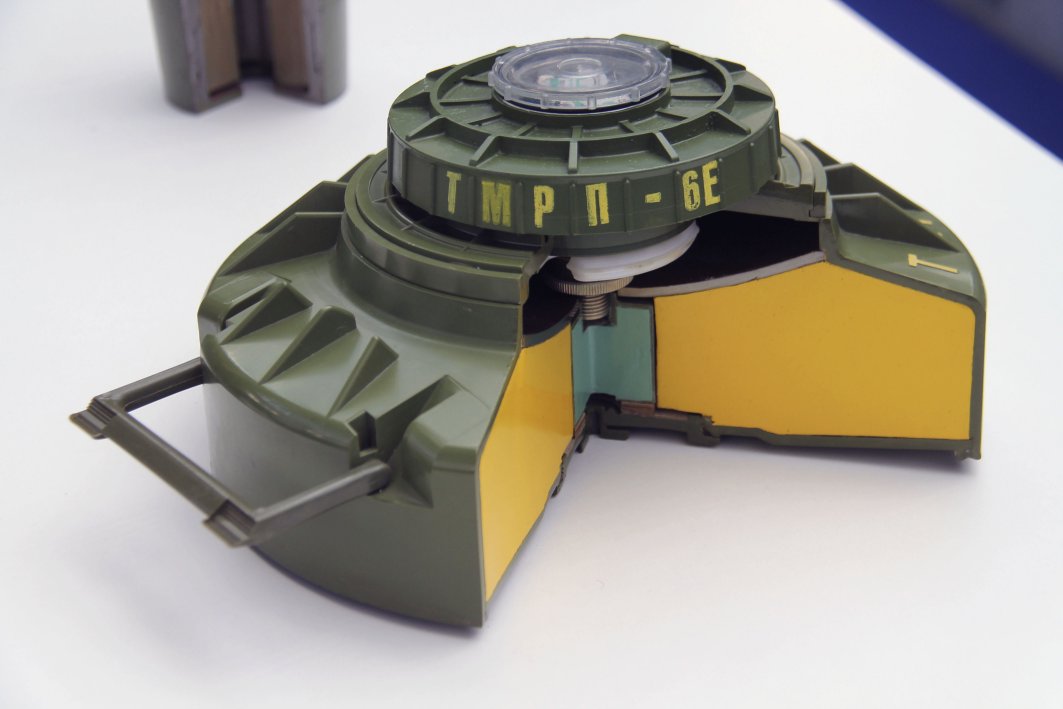
The Military Technical Institute (MTI), part of the Serbian Ministry of Defence (MoD), has confirmed that it is developing a modernised version of the TMRP-6 anti-tank mine (ATM), known as the TMRP-6E.
ATMs typically use a high-explosive (HE) blast effect charge to disable an armoured fighting vehicle (AFV) but the TMRP-6 uses an explosively formed penetrator (EFP)-type warhead that is claimed to be able to penetrate between 40 mm and 80 mm of steel.
The original TMRP-6 ATM had a mechanical fuze but the TMRP-6E has an electronic fuze on top of the mine, with the actual casing constructed of plastic so it is more difficult to detect.

The TMRP-6E ATM is fitted with an ‘electronic module’ fuze. (Christopher F Foss)
According to MTI, the electronic fuze enables reliable target identification using magnetic and vibration sensors, with mine settings being controlled via encrypted communications with an external device.
According to Sasa Savic, who works in MTI’s armament and vehicle sector, “The TMRP-6E is expected to be qualified in the next 12 months.”
Advantages over the previous version include the “possibility of satellite mapping of minefields, top efficiency on the aim, advanced algorithm against magnetic mine actuating systems, [and] complete diagnostics of the status”, MTI added.
Although the new electronic fuze was developed by MTI, production will be undertaken by Serbia’s El Opek, which manufactures various electronic fuzes for artillery projectiles, mortar bombs, and surface-to-surface rockets. It refers to the fuze as the TMRP-6E’s “electronic module”.
The TMRP-6 ATM is produced by Serbia’s HK Keusik, which also produces the TMA-4 anti-magnetic ATM.
This article, first published 3 July 2019, is subject to a correction and has been amended.
Looking to read the full article?
Gain unlimited access to Janes news and more...






